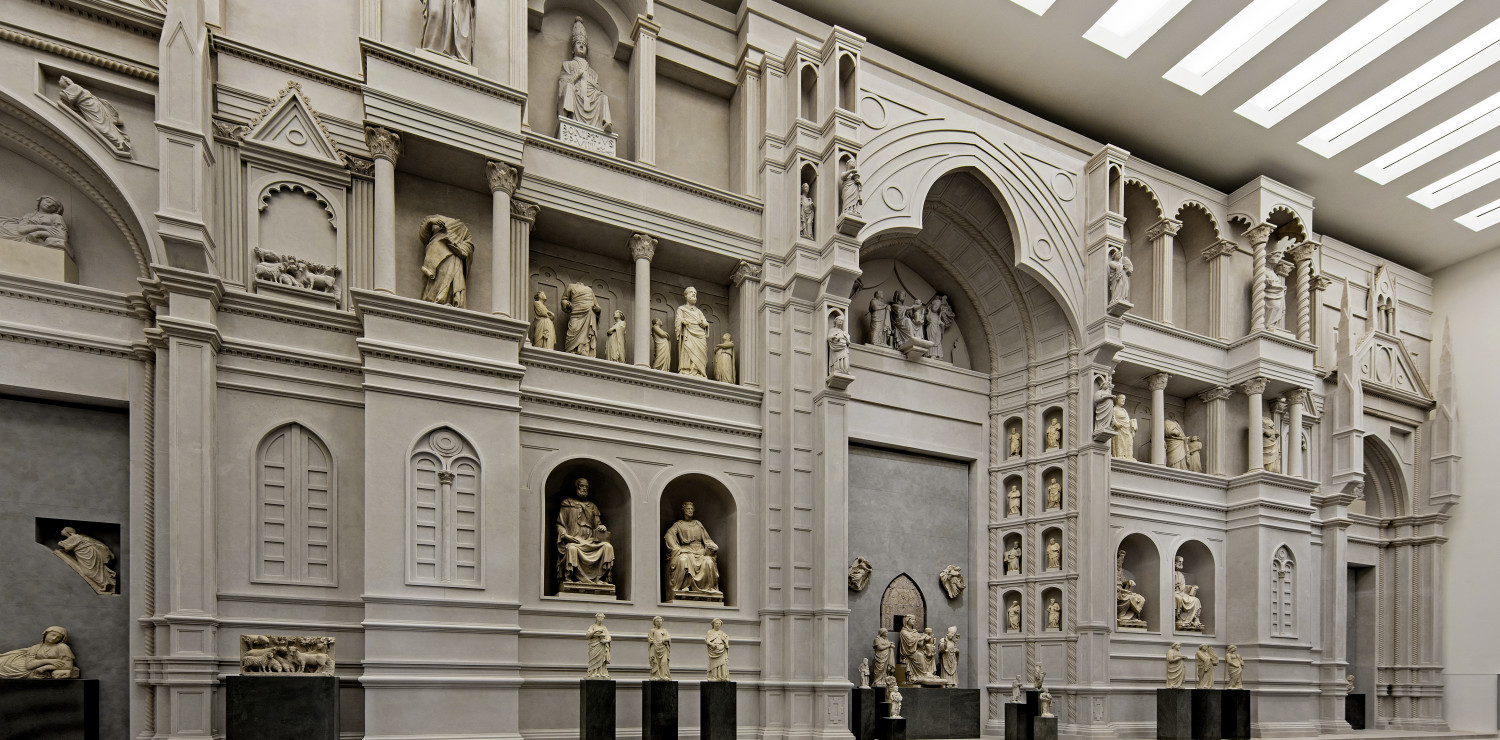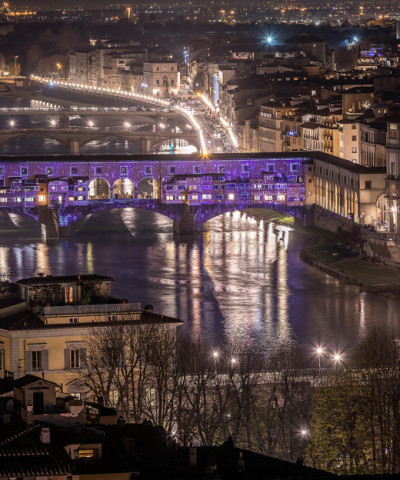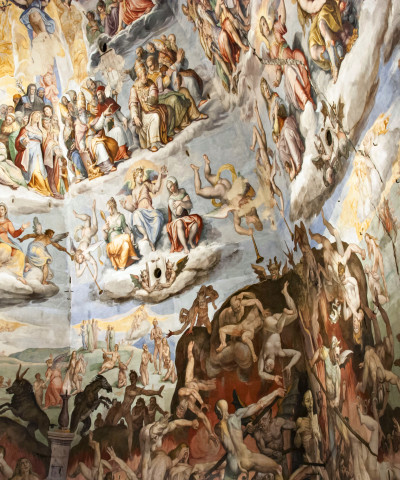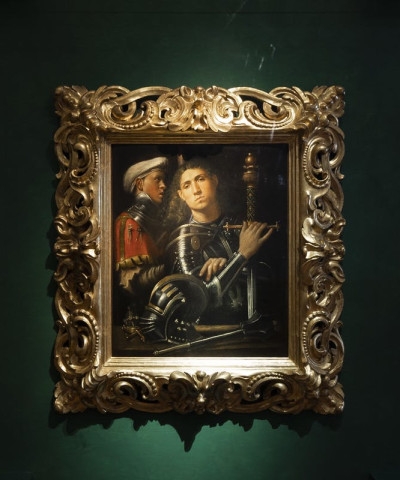Everything you need to know about the Museo dell'Opera del Duomo in Florence
What you must see in this little treasure chest of beauty
The Museo dell'Opera del Duomo houses the world's largest collection of sculpture from the Florentine Middle Ages and Renaissance. 750 works including statues and reliefs in marble, bronze and silver, including masterpieces by the greatest artists of the time: Michelangelo, Donatello, Arnolfo di Cambio, Lorenzo Ghiberti, Andrea Pisano, Antonio del Pollaiolo, Luca della Robbia Andrea del Verrocchio and many others.
 Luca della Robbia, Cantoria, foto Antonio Quattrone, courtesy Museo dell'Opera del Duomo
Luca della Robbia, Cantoria, foto Antonio Quattrone, courtesy Museo dell'Opera del DuomoMore than 200 works, including Donatello's Magdalene, Lorenzo Ghiberti's North Gate for the Baptistery of Florence and the twenty-seven panels embroidered in gold and polychrome silks to a design by Antonio del Pollaiolo.
 Donatello, Maddalena, courtesy Museo dell'Opera del Duomo Firenze, foto Antonio Quattrone
Donatello, Maddalena, courtesy Museo dell'Opera del Duomo Firenze, foto Antonio QuattroneThis majestic museum - that will be expanded in the coming years through the acquisition of the neighboring Palazzo Compagni - also houses many works never seen before or kept in storage for decades, such as the fifteen 14th-century statues and almost seventy fragments of the medieval façade of the Duomo.
Founded in 1881, in the 14th-century rooms where Michelangelo sculpted David, in order to collect the works executed over the centuries for the monuments of Florence Cathedral, the historic Museo dell'Opera del Duomo had insufficient space to house the vast collection, most of which consisted of monumental works.
Therefore, in 1997, the Opera di Santa Maria del Fiore purchased a large building adjacent to the museum. The union of the two buildings gave rise to the new Museo dell'Opera del Duomo, which has almost 6,000 square metres of exhibition space, more than doubled compared to the past, and 25 rooms on three floors, some of which are enormous in size.
A spectacular museum layout will finally be able to showcase such unique masterpieces as Michelangelo's Pietà, Donatello's Magdalene and the Prophets, Luca della Robbia and Donatello's Cantorie, and Lorenzo Ghiberti's legendary Gates of Paradise and North Gates from the Florence Baptistery.
 Michelangelo, Pieta, Museo dell'Opera del Duomo, foto Antonio Quattrone
Michelangelo, Pieta, Museo dell'Opera del Duomo, foto Antonio Quattrone At the centre of the museum is the spectacular Hall of the Ancient Façade, where on one side is a colossal 1:1 scale model of the ancient façade of the Florence Cathedral built by Arnolfo di Cambio starting in 1296, never finished and destroyed in 1587. In front of this titanic backdrop, reconstructed on the basis of a 16th-century drawing, will be 40 statues from the 14th and early 15th centuries originally made for the façade by artists such as Arnolfo di Cambio, Donatello and Nanni di Banco.
On the opposite side of the room, the Porta del Paradiso (1425-52) named after Michelangelo "will return to occupy a frontal position with respect to the ancient façade of the Duomo, reconstructing a visual and iconographic relationship lost over 400 years ago," says Timothy Verdon.
 Porta del Paradiso, Lorenzo Ghiberti, Museo dell'Opera del Duomo, Courtesy Opera di Santa Maria del Fiore, foto Antonio Quattrone
Porta del Paradiso, Lorenzo Ghiberti, Museo dell'Opera del Duomo, Courtesy Opera di Santa Maria del Fiore, foto Antonio QuattroneNext to the Door of Paradise is the famous North Door of the Baptistery of Florence, and in the future also the South Door by Andrea Pisano, which was restored by the Opificio delle Pietre Dure with exceptional results beyond all expectations: under the dirt and surface incrustations, the splendid original gilding has re-emerged, still present after six centuries, in the sculptural reliefs of the 28 panels, in the heads of Prophets and Sibyls and in the beautiful frieze with plant motifs teeming with small animals.
Next to the Old Façade room are the rooms housing the collection's most spiritually impressive works: Donatello's Penitent Magdalene and Michelangelo's Pietà (1547-1555). The latter is one of the great artist's most mysterious works: perhaps intended for his funeral monument, Michelangelo in a fit of despair attempted to destroy it with a hammer. The Magdalene (1453-55), a masterpiece of Donatello and the early Florentine Renaissance, depicts an elderly woman devoured by the years and penances, so slender that she can barely stand on her feet. At the same time, the figure exudes great inner strength in her gaze full of tenderness and devotion.
 Museo dell'Opera del Duomo, Sala della Maddalena di Donatello, foto Antonio Quatrone
Museo dell'Opera del Duomo, Sala della Maddalena di Donatello, foto Antonio Quatrone On the upper floor is Giotto's Belfry Gallery, 36 metres long, with the 16 life-size statues - including Donatello's extraordinary prophets Habakkuk, Jeremiah, the Prophet Imberbe and The Sacrifice of Isaac - and the 54 panels that adorned the bell tower. This room, like the one on the upper floor of the same size, has openings from which one can see the imposing model of Arnolfo's façade of the cathedral, in a continuous visual dialogue.
A museum within a museum is the Gallery of Brunelleschi's Dome (1418-1436), also on the first floor, with 15th-century wooden models, including one attributed to Brunelleschi himself, materials and tools of the time used in the construction of the Dome and the great architect's death mask. Completing the room are two large wooden models of the Lantern and the Dome made by architect Franco Gizdulich.
A few steps and you enter the Cantorie Gallery by Donatello and Luca della Robbia with the two large scrolls made between 1431 and 1439 for the cathedral; next to it is an octagonal room with the 25 reliefs from the 16th-century choir made by Baccio Bandinelli and the Silver Altar Room where the works that were part of the 'Baptistery Treasury' are displayed.
 Museo dell'Opera del Duomo, Sala dell'Altare di Argento, foto Antonio Quattrone
Museo dell'Opera del Duomo, Sala dell'Altare di Argento, foto Antonio QuattroneOn the second floor of the museum, another gallery houses works from the late 16th and early 17th century relating to the Medici's efforts to 'modernise' the Cathedral: large wooden models for the new façade of the Cathedral, to replace the one dismantled in 1587, by Bernardo Buontalenti, Giovan Antonio Dosio and Gherardo Silvani, as well as ephemeral statues and paintings made for the wedding of Grand Duke Ferdinand I to Princess Cristina of Lorraine in 1589.
At the end of the gallery there is a small room with a breathtaking view of Brunelleschi's Dome, as on the third floor, where there is a marvellous open-air panoramic terrace, among the roofs of Florence.
Not to be missed.












